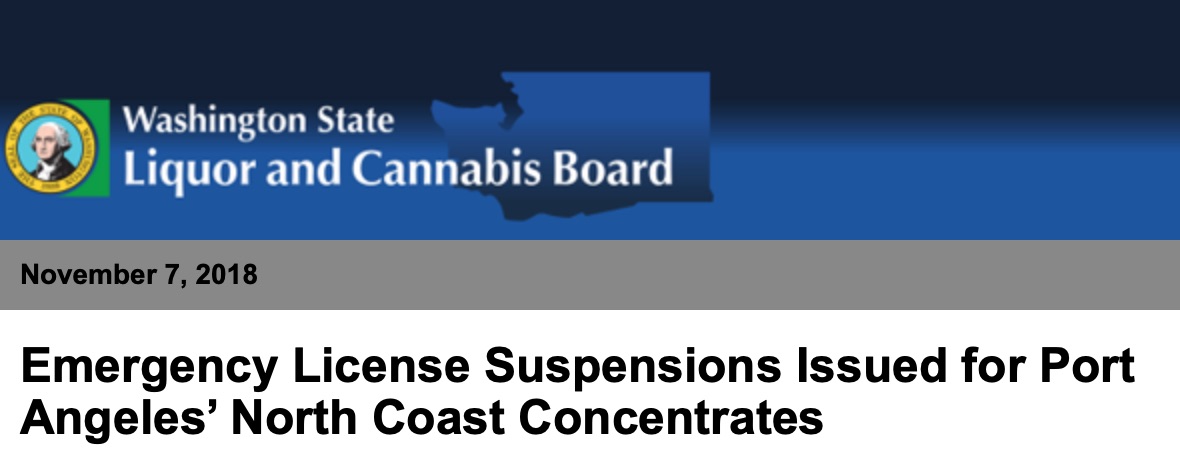It was supposed to be cut and dried. Change the law (after getting sued by patients). Eliminate “home grow” by the same. Set up a nice, neat, efficient sub-department of the German version of the FDA (or BfArM for short). Put the bid online, in an attempt to take the paperwork out of the whole process, and let it rip.
Done and dusted by last summer. Right? Wrong.
In fact, as of now, the second bid deadline has been extended to (at least) December 2018. There is already a pending lawsuit, which has pushed the deadline back this fall several times.

BfArM as usual, is sending out non-statements. They cannot comment. This is, again, a pending EU bid.
However, this is, as Germans at least are rapidly realizing, not just another bid. To begin with, there is never a normal first in this industry. And the highly bumpy road auf Deutsch is just a redo of industry realities in every other legalizing jurisdiction.
That the dramas involved are both Shakespearean and of a lesser kind is also part of the mix. Here, for our reader’s benefit, are the summaries of the acts:
The Story So Far
Cue the German Parliament. Change the law. Issue the tender. Get sued. And this is all before last summer was over. Generally speaking that was more or less Act I.
Act II, so far, has been the response. The government, along with BfArM have been engaged in a remarkable discussion in public that is already dramatic by German standards anyway.
enterprising entities are getting import licenses.First, a federal German court called out a fault by a federal agency, which was bad enough.
However, in what appears to be an ongoing act of defence in this very strange second act indeed, BfArM appears to be playing defence to prevent any more legal action. Notably, as the threat of a second lawsuit appeared this fall against the second bid and revised bid issuance, the agency just moved the deadline back, repeatedly. It is now set for some time in December, although industry rumours suggest that the agency will continue to move the goalposts back until after the court date next spring, if necessary.
That does extend the time for intermission. In the meantime, enterprising entities are getting import licenses.
The Major Drama
As in all of the greatest acts and periods of historical change, there are far greater currents that carry the main story line forward. The revolutionary rumbles surrounding cannabis legalization earlier in the decade in the United States have now been felt on a far greater, global scale. Politically, the right to take cannabis has been tied closely to states’ rights in the U.S. since the turn of the century.
Now in the second decade of all of this tumult, cannabis reform as global revolt echoes the zeitgeist of the times. The Donald is now in the second part of an already historically constitutionally convoluted time in the U.S. The U.K, potentially spurred by similar forces might appear to still be on the brink of Brexit. And the EU has begun to try to organize, both on an individual country basis as well as collectively, to deal with political populism.
Shifting regulation in Europe may be groovy, but from a public health perspective, there is much to prove.There is a great deal of political and economic discontent just about everywhere. Law suits, particularly against governments over issues as intransigent as cannabis, in other words, are a powerful tool right now for the disaffected just about everywhere. Not getting a license to grow cannabis and participate in a valuable, multi-billion dollar economy is a powerful grudge.
There is also, beyond this, the overarching flavour of a new trade agreement called CETA which specifically gives corporations the right to sue federal governments. Strange times indeed. Maybe that is why the German Minister of Health, Jens Spahn, just oversaw a historic lifting of the import quota of medical cannabis from Holland to Germany?
The Minor Drama
There are quite a few acts to this play too right now. Shifting regulation in Europe may be groovy, but from a public health perspective, there is much to prove. This is true of cannabis that is reimbursed by health insurers. It is also true of the novel food debates now springing up across the continent, particularly tied to isolates that have made their landing here.
There are also other issues in the mix that include the idea of an agriculturally based economy that might also damn the bid to a kind of strange purgatory for some time. Germans, despite their historical nostalgia for the same, are not an agrarian society. This is a culture ruled by tradition and science, for all the many conflicts that generates. This means the “cannabis as pharmaceutical” conversation is in the room is a part of the national DNA. No matter how much cheaper unprocessed flower might be.
The Players
There are two, broad camps here at the moment. The first are firms that made the cut the first time around (i.e. the large public Canadian LPs). The second is everyone else.
Nobody seriously expects more than one upstart German firm to make it through to getting a cultivation or processing license at this time. Those are widely expected to go to the major firms who have been in the front position from last spring, such as Canopy, Wayland, Aphria and the Dutch Bedrocan.
But those “upstart” Germans are furiously trying to deal themselves into the game. For some it means starting with CBD cultivation. For others it means slinging lawsuits. The last go around, one of the most serious litigants was not an agricultural producer, in fact, but a German wheelchair company.
In other words, while a bit more European in flavour, those who still clamour for a chance to cultivate are every bit as iconoclastic as those on in other climes.In the meantime, the import business is flourishing.
The Concluding Act?
There are several ways the current situation could end. The first is that the bid is concluded next April. The second is that it is not. In the meantime, the import business is flourishing. And, even better for the German government, the industry is not cultivating domestically.
In the eventuality that the bid is run off the road again next spring, in other words, the government is gamely lining up behind the idea that imports, at least for now, are the way to move into the next segue.
That said, at some point, tired of getting sued if not delayed, the German bid will conclude and German crops will be grown. For now, however, the safest conclusion for this particular drama looks to be 2019. But with plenty of room for a curtain call the year after that too.





 The California Cannabis Track-and-Trace system (CCTT) gives state officials the ability to supervise and regulate the burgeoning cannabis industry in the golden state.
The California Cannabis Track-and-Trace system (CCTT) gives state officials the ability to supervise and regulate the burgeoning cannabis industry in the golden state.

 While this marks
While this marks 

 And cannabis is a drug like no other. Why? Despite all the pharmacization of the plant that is going on right now as producers are being forced to produce pills and oils for the medical market, cannabinoid treatments will not be pushed so easily into “orphan” status – since whole plant products can treat a range of diseases. This is important in terms of supply and negotiated prices down the road. But in the short term, cannabis is falling into a couple of strange categories created by organized public healthcare, insurance mandates (both public and private), the demands being placed on producers in this space to act more like pharmaceutical companies, limited public spending budgets, and a changing demographic where chronic conditions treated by cannabis are a whole new ballgame. Namely patients are living longer, and not necessarily old.
And cannabis is a drug like no other. Why? Despite all the pharmacization of the plant that is going on right now as producers are being forced to produce pills and oils for the medical market, cannabinoid treatments will not be pushed so easily into “orphan” status – since whole plant products can treat a range of diseases. This is important in terms of supply and negotiated prices down the road. But in the short term, cannabis is falling into a couple of strange categories created by organized public healthcare, insurance mandates (both public and private), the demands being placed on producers in this space to act more like pharmaceutical companies, limited public spending budgets, and a changing demographic where chronic conditions treated by cannabis are a whole new ballgame. Namely patients are living longer, and not necessarily old.




 Licenses are required for every step of the process. In other words, producers must receive a license to legally cultivate cannabis for medical purposes. Those wishing to distribute must also have such products admitted to the formal list of medicines that can be distributed domestically. Manufacturers are also not allowed to distribute their product to any entity except pharmacies, hospitals and other manufacturers with a license to distribute.
Licenses are required for every step of the process. In other words, producers must receive a license to legally cultivate cannabis for medical purposes. Those wishing to distribute must also have such products admitted to the formal list of medicines that can be distributed domestically. Manufacturers are also not allowed to distribute their product to any entity except pharmacies, hospitals and other manufacturers with a license to distribute.





 According to a release emailed last week, the violation was uncovered during a routine traffic stop. “On September 20, 2018 an employee of North Coast Concentrates was pulled over by Lower Elwha Police, during the course of the traffic stop officers found 112 grams of traceable marijuana concentrates, three large jars and a large tote bin of untraced dried marijuana flower,” reads the release. “The products were not manifested in the state traceability system. Subsequent investigation by WSLCB officers revealed that the untraced product had been removed from the licensees grow operation and that the traced concentrates were returned from a marijuana retailer in Tacoma several weeks earlier.”
According to a release emailed last week, the violation was uncovered during a routine traffic stop. “On September 20, 2018 an employee of North Coast Concentrates was pulled over by Lower Elwha Police, during the course of the traffic stop officers found 112 grams of traceable marijuana concentrates, three large jars and a large tote bin of untraced dried marijuana flower,” reads the release. “The products were not manifested in the state traceability system. Subsequent investigation by WSLCB officers revealed that the untraced product had been removed from the licensees grow operation and that the traced concentrates were returned from a marijuana retailer in Tacoma several weeks earlier.”




